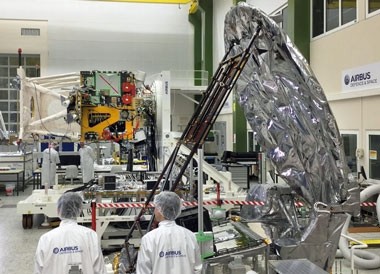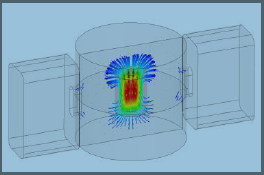
GRaCE: G-band Radar for Cloud Evaluation
Flagship – 11th Call
Lead Organisation: STFC RAL Space
In this 18 month project, a highly experienced national team will be building and demonstrating a 200 GHz, 1.5 mm wavelength, cloud profiling radar, establishing the basis for the future operation of a similar Earth observing radar in space. The radar is called GRaCE: G-band Radar for Cloud Evaluation. The small wavelength of a 200 GHz space radar will provide enhanced global information on the distribution of small droplets in the atmosphere. When operated in tandem with existing lower frequency space radars, the dual wavelength observations will enable atmospheric scientists to better characterize the microphysical properties of hydrometeors in water and ice clouds. Such information is needed to improve the accuracy of societally important numerical weather prediction models.

Characterisation of Ferrite Material in Remanent State for use in New High Peak Power Applications
Pathfinder – 7th Call (Completed 2015)
Lead Organisation: Honeywell
The next generation of radar missions cover a wide range of frequencies from C-band to Ka-band. A common feature of all these missions is the dramatic increase in the peak power requirement of the system. Whereas previous instruments operated at typical peak powers of 100W, the newer requirement is for peak powers in excess of 3kW, thus presenting new challenges to power amplifier, radar feeds, antenna, and switching element providers. Ferrite switches are the technology of choice for radar switching elements since they provide a very high number of switching actions over the instrument lifetime, low insertion loss, high reliability, fast switching time, and high peak and average power handling. A key issue for the design of ferrite switches capable of handling high peak power is the selection of the ferrite material, and being able to predict the power threshold at which the switch will start to behave in a non-linear manner.
High-Frequency Doppler Radars for a Polar Precipitation Mission
Pathfinder
Lead Organisation: University of Leicester
This study aims at better quantifying the information content coming from dual-frequency reflectivity ratio measurements and at identifying the optimal frequency pair for discriminating between snow habits and for narrowing down uncertainties in snow-rate estimates. Besides considering the 35-94 GHz pair, initially proposed for the EE8 Polar Precipitation Mission radar, higher frequencies (140 and 220 GHz) will be examined.
